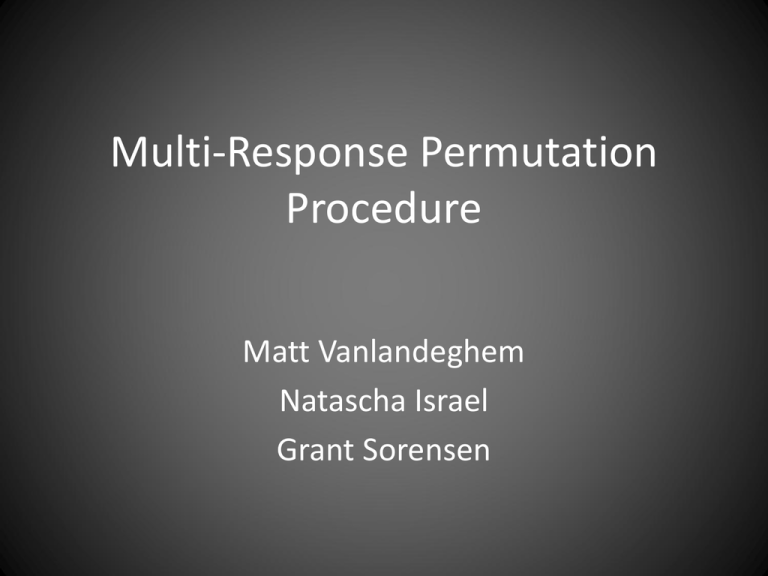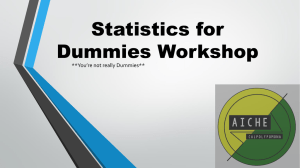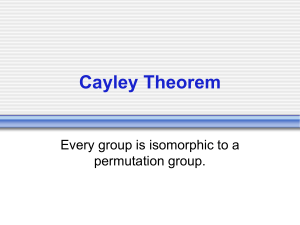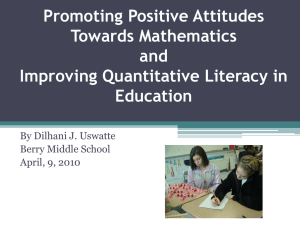Multi-Response Permutation Procedure
advertisement

Multi-Response Permutation Procedure Matt Vanlandeghem Natascha Israel Grant Sorensen MRPP - Introduction • Nonparametric procedure • Tests null hypothesis of no difference between two or more groups of entities – Groups determined a priori • Procedure based on distances among data points within groups How MRPP works • Scatter diagram • Measure distance among all points within each group in diagram • Take averages of distances for each group • Calculate observed delta (δobs) – Weighted average • Determine if δobs is unusual – Calculate number of possible permutations (M) – Calculate p value MRPP - Benefits • Avoids making distributional assumptions – No need for normality or equality of variance (or variance-covariance matrices) • Robust to outliers • If sample size (n) < number of variables (p) • Non-parametric approach to MANOVA MRPP - Example • Freshwater Ecology MRPP - Downfalls • • • • No direct procedure in SAS Most use Euclidean distance Computationally strenuous for large data sets Number of total combinations – N!/(n1!n2!) • If M is too big (M>106) – Approximate p values using Pearson type III distribution – Calculate mean (μ δobs), variance (σ2 δobs), and skewness for delta under null hypothesis – Standardized test statistic (T) under null hypothesis • T= (δobs - μ δobs)/ σ2 δobs – Calculate p value MRPP - Caveats • Not always the best alternatives to MANOVA • Test stat can be un-reliable for large data sets (n >20) • Monte Carlo exercises – standard parametric tests out performed MRPP when data satisfies standard assumptions – REF MRPP – Alt Examples • Social Sciences – Multi-response data that tends to violate normality – Data from only a small group of individuals • Medical sciences – 20 year study on cancer patients – Low n but high p • Data prone to extreme outliers References • Biondini, M.E., Mielke Jr., P.W., Berry, K.J. 1988. Data-dependent permutation techniques for the analysis of ecological data. Vegetatio 75: 161-168 (1988). • Cai, L. 2004. Multi-response Permutation Procedure as An Alternative to the Analysis of Variance: an SPSS Implementation. Department of Psychology, University of North Carolina. • Mielke, P.W. & Berry, K.J. 1994. Permuation tests for common locations among samples with unequal variances. Journal of Educational and Behavioral Statistics 19:217-236. • Mielke, P.W. & Berry, K.J. 2001. Permuation methods: A distance function approach. New York: Springer-Verlag. • Mielke, P.W., Berry K.J., Johnson, E.S. 1976. Multi-response permuation procedure for a priori classifications. Communications in Statistics – Theory and Methods 5: 1409-1424.







